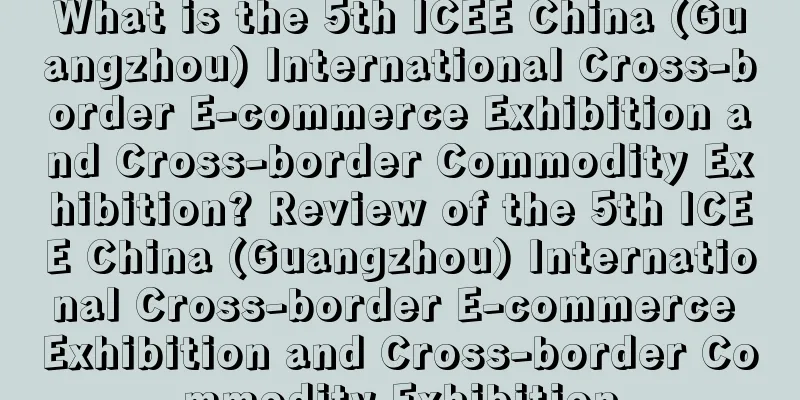A MZ123 has learned that the Regional Comprehensive Economic Partnership (RCEP) will reportedly come into effect on January 1, 2022, covering six ASEAN member states and four non-ASEAN member states including China.
Cross-border navigation , a number of favorable policies have been implemented to promote the development of cross-border e-commerce! #Amazon##Cross-border headlines#Cross-border e-commerce video account ▲ Video account focuses on cross-border navigation According to statistics from China's General Administration of Customs, in the first three quarters, China's total imports and exports with the other 14 RCEP member countries reached 8.81 trillion yuan, and cross-border e-commerce imports and exports increased by 20.1% year-on-year. Once RCEP comes into effect, it is expected to further boost cross-border e-commerce: ① Reduce tariffs; ② Improve logistics efficiency; ③ Reduce compliance risks. In addition, the country has recently introduced a number of support policies to create a good environment for the development of cross-border e-commerce. It is foreseeable that with the help of relevant favorable national policies, sellers can still usher in more development opportunities. However, despite the sellers' favorable timing and location, Amazon did not seem to be very cooperative. While the risk control policy was constantly upgraded, various charging standards were also criticized by sellers, making the sellers' already high costs even worse. Recently, a seller revealed that Amazon seemed to be secretly tampering with the points system and charging sellers extra fees. The points system is automatically activated, is Amazon secretly charging sellers fees? It is understood that Amazon Japan’s points policy was officially implemented on October 15, 2021, providing sellers with a one-year points cost discount. However, a few days ago, a seller accidentally opened an order and found that the points system was automatically implemented without the seller's active activation. After checking the backend, it was found that Amazon had set a 1% points rate for him. Fortunately, he discovered it early and stopped the loss in time. ▲ The picture comes from Zhiwubuyan It is reported that when a seller's product offers 2% or more Amazon points, the product details page and search results will automatically display a red mark of 2% or more points . Through this mark, buyers can see the points reward and are expected to get a higher conversion rate. However, the seller is responsible for paying for the points issued to buyers. According to Amazon's notice, as of October 31, 2021, sellers can choose any value between 1% and 50%, and after November 1, sellers can choose any value between 0% and 50%. It is recommended that relevant sellers go to the backstage to view and modify the points percentage. The seller said that Japanese buyers advocate thrifty and planned consumption and like everything on sale. Although the product will have a striking logo after the points system is enabled, which is equivalent to a traffic entrance, in fact, the merchant needs to pay for it. The seller couldn't help but sigh: It feels like every new feature is exploiting the seller's money. ▲ The picture comes from Zhiwubuyan After checking their accounts, some sellers found that they were also automatically set up with a points system and had been deducting points for four consecutive days. One order is worth 30 to 40 points, and the total for dozens of orders is not a small amount. According to feedback from a seller, the effect of the points policy is not significant. He tested it by setting 2% points for a high-priced product and no points at all, and compared the data for 10 days, and found that there was not much difference in the order volume. Some sellers admitted that the traffic of Amazon Japan and Asia Site has dropped significantly since this year, and the conversion rate has continued to decline. At the same time, Chinese sellers have begun to leave the site at an accelerated pace, and the top 100 has been dominated by more local sellers. Under the impact of Rakuten, Amazon's attractiveness has continued to decline, and even service providers are scrambling to run away. In fact, some of Amazon’s policies have long been criticized for exploiting sellers in disguised form under the guise of benefiting sellers. It can be seen that this new points policy, with a certain cost but not much effect, is obviously a loss. With increasing costs, is Amazon advertising a pain point for sellers? Not only that, in addition to complaining about the points system, sellers also expressed deep dissatisfaction with Amazon's advertising budget. The seller found that during the advertising process, the actual budget always exceeded the original budget. Then he set a fixed bid, but the result was still higher than the budget. After opening a case for consultation, the customer service replied: The daily budget amount is the average of a calendar month. The seller's expenditure may be less than the daily budget or 25% more than the average daily budget. Since the seller obtains high traffic and benefits from it by opening ads, it is pointed out that the budget is exceeded. Customer service further stated that at the end of the month, sellers will not spend more than the set daily budget x the number of days in the month. Amazon will adjust the seller's invoice for any over-delivery so that the seller is not charged more than the monthly fee limit. For example, if your budget is $100 and you get $90 worth of clicks on the first day, you can get a maximum of $110 worth of clicks on the second day to keep your average daily investment at $100. Nowadays, Amazon’s advertising costs are getting higher and higher, which has greatly increased the cost burden on sellers. However, it is difficult to increase product exposure and rankings relying solely on natural traffic. Many sellers lament: advertising space is gradually replacing free traffic space, and basically good positions require payment. Sellers are always being ripped off. Apart from price wars and constant internal competition, are there any other ways out? ▲ The picture comes from Zhiwubuyan As Amazon's risk control policy continues to tighten, any store suspected of fake orders and reviews may be banned. Now even off-site promotions may bring risks to accounts. How can orders be placed? The only way is to increase advertising investment and increase product traffic.
However, even if sellers are willing to bear the pain of being cut, the traffic brought by advertising is not stable. Some sellers spent 10 dollars on advertising for a product with a unit price of 10 dollars, but the final profit was only 5 orders; some sellers only spent money on advertising but did not receive any orders, and the conversion rate was close to 0. Some sellers even said frankly that even if there were many orders from advertising, the ranking would not rise slowly, so naturally the number of orders could not keep up, and they would always be at the mercy of Amazon. According to Jungle Scout research, 34% of Amazon sellers said they spent more on advertising this year than in previous years. With the increase in seller demand, Amazon's advertising business has grown rapidly. In the third quarter, Amazon's advertising business revenue was US$925 million. The strong performance became the only growth highlight in Amazon's overall sluggish Q3 performance, except for cloud services. It can be said that Amazon’s current advertising empire is inseparable from the advertising fees contributed by sellers. For sellers, Amazon advertising is like a double-edged sword. In order to grab product traffic and compete for market share, they must rely on advertising promotion, but the increasing costs have also become a major pain point for sellers.
|










